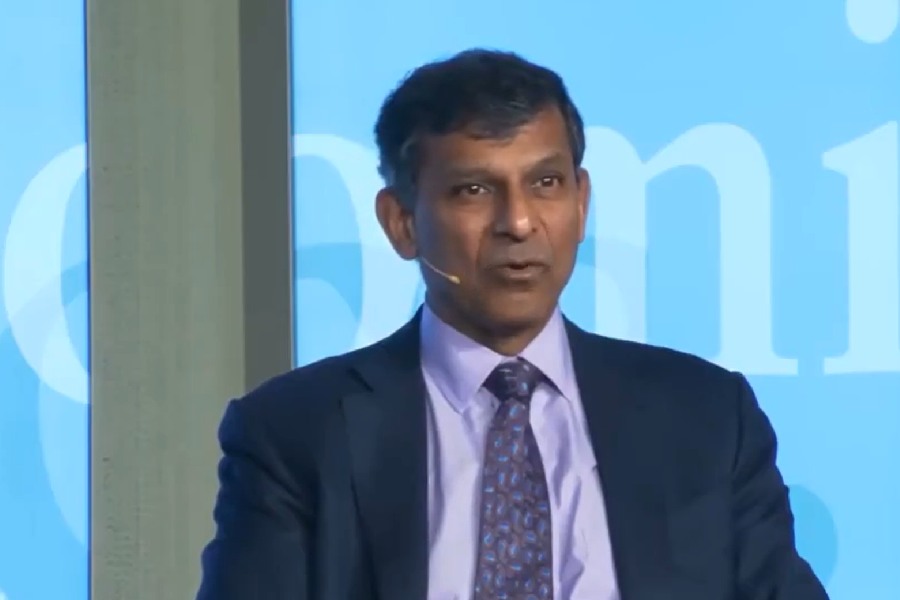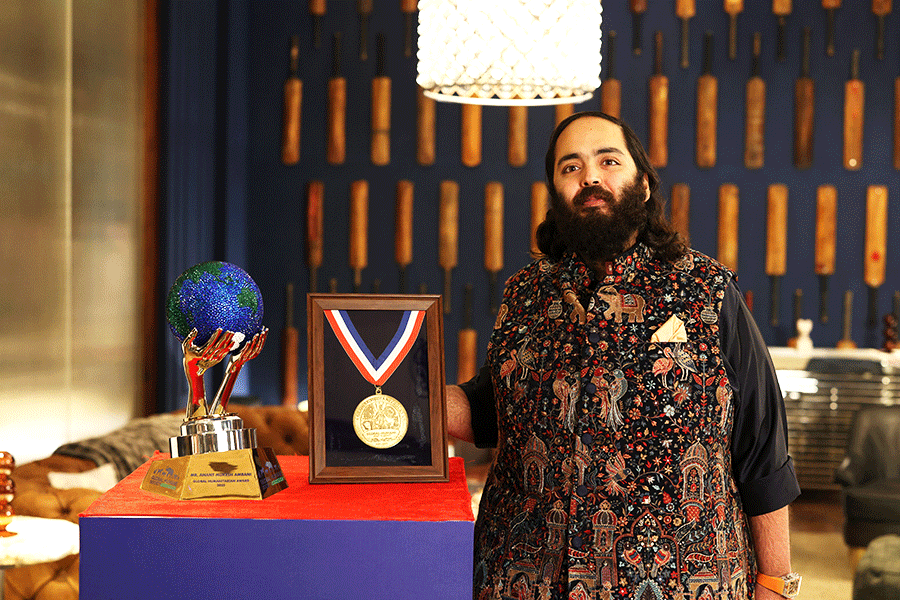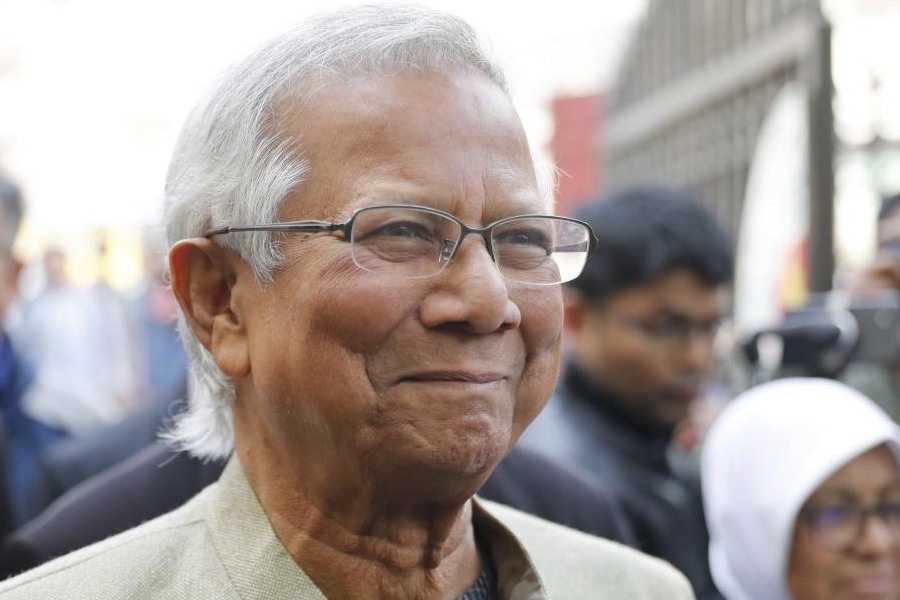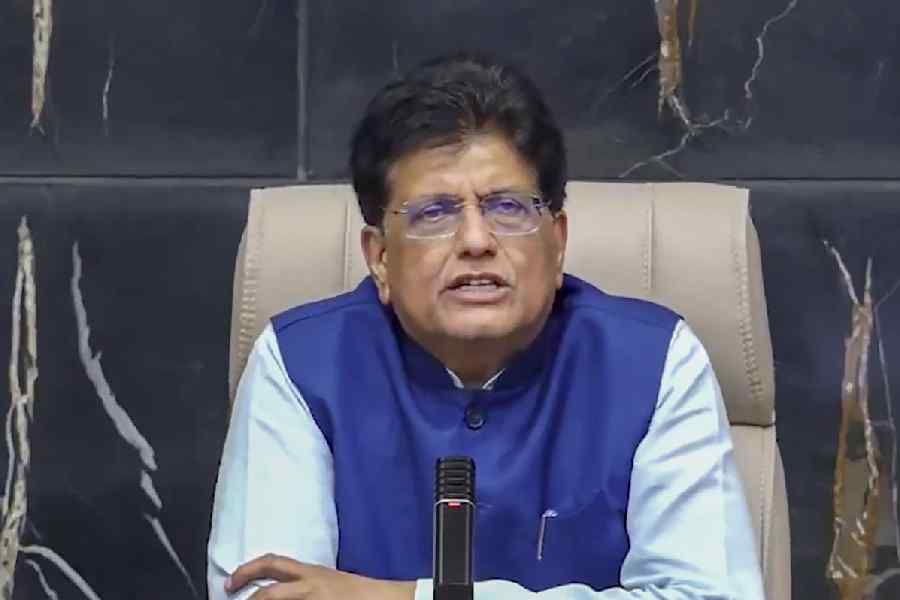 |
February 1995: The day after Saraswati Puja. Senior monks of the Ramakrishna Math and Mission have gathered at Mayer Ghat along the Hooghly to immerse the idol in the evening along with brahmacharis. Lights have come up across the sprawling campus at Belur.
A yellow taxi arrives and a lady steps out. Tall and upright, but her face hidden behind the long end of her sari.
Suchitra Sen had a request.
She wanted to visit the late Bharat Maharaj’s residence and then the main temple.
The monks escorted her to Maharaj’s room and then towards the temple, whose doors had already shut for the day after the evening prayers.
Outside the imposing structure, she waited for few minutes, eyes closed, and then handed over the flowers she had brought.
 |
| Suchitra Sen being photographed for her voter’s identity card in 1995. This was the last time the reclusive icon was seen in public. Picture by Rajib Basu |
That evening, many junior monks who had only heard about the legend of Suchitra Sen saw the woman the world outside had rarely known.
Sen’s association with the Ramakrishna Mission dates back to the ’70s.
Since 1978, when she went into seclusion, the screen goddess found her “inner peace” in Ramakrishna.
Who guided her into the world of spirituality is not clear but many credit Bharat Maharaj — for whom Jawaharlal Nehru had come down to Belur — for it.
Sen was so moved by the philosophy and teachings of Sri Ramakrishna that she got initiated (diksha) by Swami Vireshwarananda, the 10th president of the Math and Mission, in the late 1970s.
Daughter Moon Moon followed in her footsteps later.
“The diksha took place with Suchitra alone in President Maharaj’s room,” said a senior monk. “In 1985, when Vireshwaranandaji passed away, she sat under a mango tree as the last rites were being performed.”
Since her early days as a recluse, Sen seldom passed an opportunity to visit Belur. Sometimes early in the morning, in the evening, or late in the night, to avoid prying eyes.
A closely guarded secret even among other monks, the trips would be known to only a few high up in the order.
Math insiders said the last time she came to Belur was in 2000 — her pallu pulled down the same way over her face.
“Suchitra Sen would always come in a taxi. The same taxi with a Sardar at the wheel,” recalled a senior monk. “She would often visit Swami Abhayananda (Bharat Maharaj) and spend time listening to him at his residence in the northern corner of the Math’s campus, overseeing the Hooghly.”
A devout follower, Sen would turn up every year after Puja to offer pranam to both Swami Vireshwarananda and Bharat Maharaj.
“One day, followers turned up in large numbers to meet Bharat Maharaj,” recalled another monk. “The serpentine line reached right up to GT Road. Maharaj asked his secretary Montubabu why this sudden surge of emotion and then realised that news had somehow leaked that Suchitra Sen was inside.”
Sen’s devotion was so strong that behind her veiled existence she would mostly talk about Ramakrishna Paramahamsa, Sarada Devi and Swami Vivekananda.
“Some of the top stage performers of Bengal, like Girish Ghosh and Noti Binodini, have been part of the Ramakrishna movement,” said Swami Suvirananda, assistant secretary of the Math and Mission. “Thakur Ramakrishna always believed in ‘lok shiksha (education for the masses)’ and would say that artistes have a great role to play in spreading this shiksha. Sen was no exception. After she quit the tinsel world, she was completely immersed in the thoughts of Thakur.”
Sen held Durga Puja at Belur Math close to her heart. Math sources said she ensured her “little contribution of Rs 10,000 and a red sari” reached on time.
Over the past few years, when her health started failing, she would call up the Math office and request someone to visit her so she could hand over the cheque.
“At her home, she would brief the guards in advance about our visit. When we arrived, her nursing staff would lead us into her room,” recalled Swami Subedananda, one of the monks who had visited Sen for years. “She would first treat us to kochuri, alur dum and coffee and then talk about her puja. We wouldn’t leave without visiting her place of worship.”
Till a few years back, Suchitra would be waiting in a neatly pleated sari to receive the monks. As her health took a toll, a long flowing gown replaced the sari.
“Suchitra would never discuss her life as a heroine with us. She’d speak about how she dreamt of Sarada Devi and her unending love for Thakur Ramakrishna. There would be two nurses by her side. At times, she would call for Moon Moon and her two granddaughters before we left,” said a senior monk.
However unwell, Suchitra made it a point to do the pranam before they stepped out.
To the visiting monks, she would narrate how she had found her inner peace in meditation and prayers. “Ami etei shanti pai, Maharaj,” she would tell the monks.
The cheque with which they left Vedanta, at 52/4/1 Ballygunge Circular Road, bore the name “Rama Sen”.
• I have everything, yet what am I still looking for? Who do I search for? What kind of a person?
A companion? Or is it a force that is greater than man, selfless and pure!
• Sometimes it’s very painful. So I rush to the other side of Ganga, Belur, for relief. I sit at His feet. I want to come closer to Him. I want to melt in Him.
• I ask so many questions, but there are no answers. I am still entrapped. The day I get liberation, maybe I will get the answers too. The answer lies in liberation and the transcendence of life lies in that answer.
• I believe in the immortality of the soul, that the soul does not die. I believe the soul takes rebirth and we reap the rewards of our deeds.
(Excerpts translated from Gopal Krishna Roy’s Suchitrar Katha, published by Ananda, 1992)











